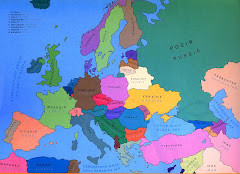

The Blue Mosque with its six towering minarets reaching to heaven glimmers in the night sky. The call to prayers beckons the devout for the fifth and last time today.
I have just arrived in Istanbul from Starobilsk, a long travel day, but I am called out too. I unpack a few things, then go for a walk around The Antique Hostel in ancient Sultanahmet Square, where I am staying: might as well get my bearings. PCV friends Jud and Justin have yet to arrive.
The bustling streets are aglow with white and blue lights, mostly blue and brilliant; lively patrons fill shops and restaurants even in this off-season. The Turkish people are happy and friendly, eager to talk, know where you are from, have your business, serve you food, sell you treasures, sell you a rug, with a hot cup of delicious Turkish apple tea. It's a mild evening, mild after coming from freezing Ukraine.
The bustling streets are aglow with white and blue lights, mostly blue and brilliant; lively patrons fill shops and restaurants even in this off-season. The Turkish people are happy and friendly, eager to talk, know where you are from, have your business, serve you food, sell you treasures, sell you a rug, with a hot cup of delicious Turkish apple tea. It's a mild evening, mild after coming from freezing Ukraine.
Around another corner I go, and that's when I see it: the Blue Mosque. I didn't realize it was so close to our hostel, and it takes me by surprise. Actually, it takes my breath away. I feel my spirit soaring. Such beauty and majesty. I am transported to a glorious Ottoman past. I am mesmerized.
 When I turn to the right, to the West, another amazing sight: directly across from the Blue Mosque, beyond beautiful fountains, is the domed basilica of Hagia Sophia or Ayasofya (Holy Wisdom), an architectural feast, complex and layered. It is older, perhaps wiser. Begun in the reign of Constantine around 340 and rebuilt three times, it was a major church of Christendom for over 900 years. It was then a mosque for 481 years. It is now a museum, thanks to the foresight and wisdom of Ataturk, revered first president of the Republic of Turkey, and his historically conscious successors up to the present. Ayasofya watched, I'm sure with pleasure, as the Blue Mosque ascended, watched as over 35,000 blue tilies were carried to its interior to glorify Allah, watched as the faithful came to pray. A living mosque to this day.
When I turn to the right, to the West, another amazing sight: directly across from the Blue Mosque, beyond beautiful fountains, is the domed basilica of Hagia Sophia or Ayasofya (Holy Wisdom), an architectural feast, complex and layered. It is older, perhaps wiser. Begun in the reign of Constantine around 340 and rebuilt three times, it was a major church of Christendom for over 900 years. It was then a mosque for 481 years. It is now a museum, thanks to the foresight and wisdom of Ataturk, revered first president of the Republic of Turkey, and his historically conscious successors up to the present. Ayasofya watched, I'm sure with pleasure, as the Blue Mosque ascended, watched as over 35,000 blue tilies were carried to its interior to glorify Allah, watched as the faithful came to pray. A living mosque to this day. Behind Hagia Sophia is the Basilica Cistern, even older than Ayasofya, a restored underground Roman cistern, one of several hundred that still lie beneath the city. It was built by Emperor Constantinius I to provide water to a growing holy city, the Rome of the East, and later restored by Justinian. It's beautiful columns have stood firm for centuries.
Sultanahmet encompasses incomparable Byzantine, Roman, Ottoman and Islamic architecture. It is the soul of a city that straddles two continents, Europe and Asia, a glorious bridge across the Bosphorous to the worlds of East and West. I have never experienced such a blending of cultures. What a fabulous journey.
I look up in the sky and behold a bright crescent moon and a neighboring star shining down on the Blue Mosque. A replica of the Turkish flag. The heavens and earth conjoined. I am in Istanbul.




























Fran: First let me thank you for inviting me to share a meal with you and Judd and Justin at the Antique Turquoise hotel, it was one of the highlights of my trip. I can see that you too fell under the spell that is Istanbul. I'm home now, but I'm still thinking about the wonderful adventures and friends I met. Enjoy the rest of your Peace Corps Tours. I look forward to reading more of your posts. Regards,
ReplyDeleteJan